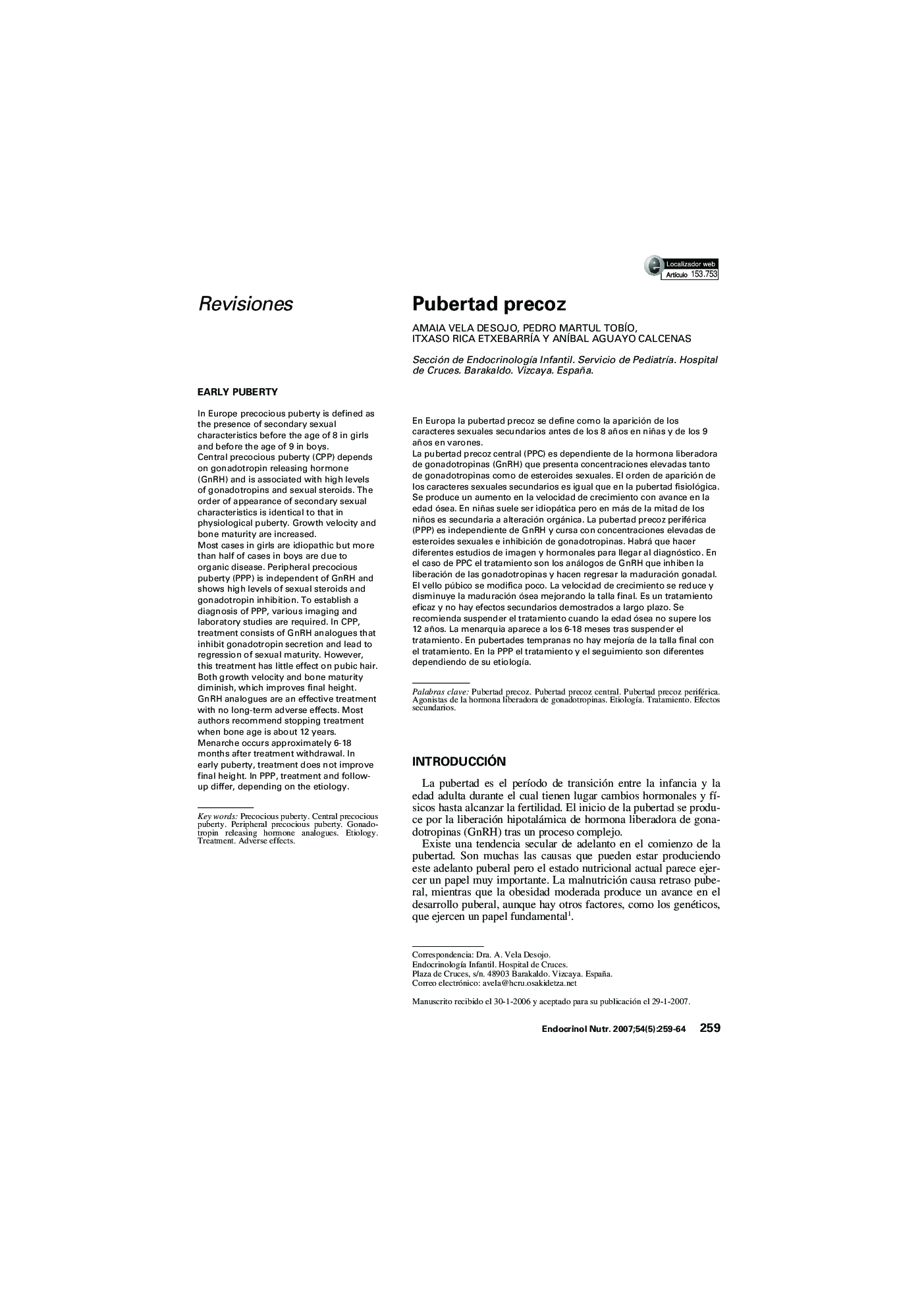| Article ID | Journal | Published Year | Pages | File Type |
|---|---|---|---|---|
| 2774716 | Endocrinología y Nutrición | 2007 | 6 Pages |
Abstract
In Europe precocious puberty is defined as the presence of secondary sexual characteristics before the age of 8 in girls and before the age of 9 in boys. Central precocious puberty (CPP) depends on gonadotropin releasing hormone (GnRH) and is associated with high levels of gonadotropins and sexual steroids. The order of appearance of secondary sexual characteristics is identical to that in physiological puberty. Growth velocity and bone maturity are increased. Most cases in girls are idiopathic but more than half of cases in boys are due to organic disease. Peripheral precocious puberty (PPP) is independent of GnRH and shows high levels of sexual steroids and gonadotropin inhibition. To establish a diagnosis of PPP, various imaging and laboratory studies are required. In CPP, treatment consists of GnRH analogues that inhibit gonadotropin secretion and lead to regression of sexual maturity. However, this treatment has little effect on pubic hair. Both growth velocity and bone maturity diminish, which improves final height. GnRH analogues are an effective treatment with no long-term adverse effects. Most authors recommend stopping treatment when bone age is about 12 years. Menarche occurs approximately 6-18 months after treatment withdrawal. In early puberty, treatment does not improve final height. In PPP, treatment and followup differ, depending on the etiology.
Keywords
Related Topics
Life Sciences
Biochemistry, Genetics and Molecular Biology
Clinical Biochemistry
Authors
Amaia Vela Desojo, Pedro Martul TobÃo, Itxaso Rica EtxebarrÃa, AnÃbal Aguayo Calcenas,
